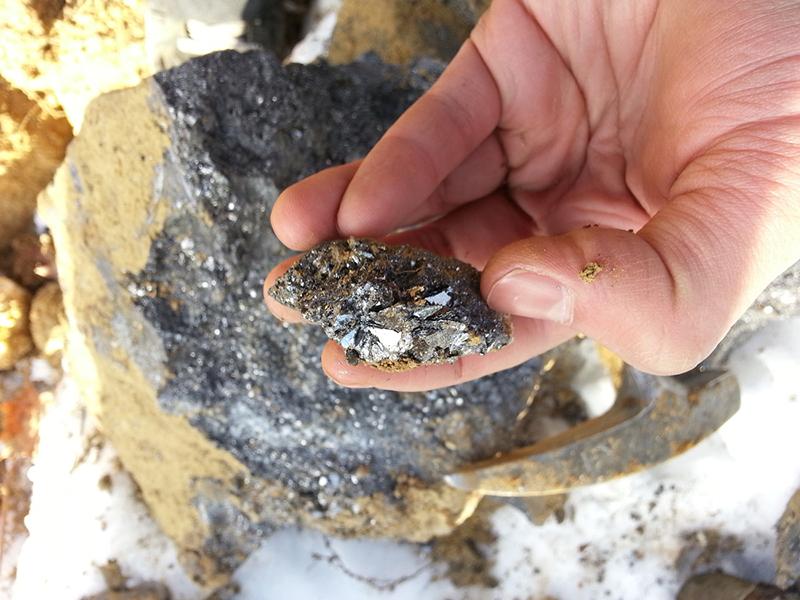Updated with new information at 4:51 p.m. on Tuesday, July 11, 2017.
The Commission for the Protection of Agricultural Land (CPTAQ) has reversed an earlier decision to suspend its analysis of the Canada Carbon Inc. file (a proposed project which includes open-pit graphite mining and a marble quarry) until a Quebec Superior Court ruling has been made on the legality of Grenville-sur-la-Rouge township by-laws. That decision, to suspend examination of the file, was issued on June 27.
A statement received from Canada Carbon Inc. on Tuesday, July 11, stated that the CPTAQ had decided to continue reviewing the file and is supposed to issue its comments very soon. Canada Carbon Inc. had requested that the CPTAQ reconsider its decision to cease work on the file.
The municipality’s zoning by-law has been challenged by GSLR residents, who say that the municipality’s zoning by-law is incorrect and contradicts the municipality’s urban (planning) bylaw. Citizens had asked for all work related to a proposed mining project to stop.
But a Quebec Superior Court judgement on June 14 refused the citizens’ request for an “safeguard” against Grenville-sur-la-Rouge. (Canada Carbon and Uniroc Inc. are listed on the challenge but are not the subject of the challenge.) The citizens were requesting that all work related to the mining project cease, citing regulatory issues. The judge pointed to evidence that the zoning by-law appears to be in conformance and that in addition, there was no serious harm nor urgency due to imminent and irreparable damage. (These were other claims which were part of the request to the court.)
Case law is cited whereby in cases of conflict between the urban plan and a township’s zoning by-law, that the latter would prevail.
Canada Carbon had issued a statement on July 10, in light of the CPTAQ suspension.
The company stated, “In the meantime, the company continues to work with its environmental consultant BluMetric Environmental in order to gather environmental data required for its upcoming environmental permit applications in connection with the Miller Project.”
SOS GSLR remains firm in its opinion that the township’s urban (planning) bylaw states that no new roads or quarries are permitted in the zone in question, according to Thomas Arnold, who is president of SOS GSLR. And that, he says, means that the township’s own zoning by-law is in contravention of its urban planning document.
The judge’s comments stated that the mining initiative was in its early stages and that several studies had to be undertaken before the project could move through the approval process, removing any urgency from the matter.
Court dates have been set aside to hear the case on February 26 and 27, 2018.
SOS GSLR has been active in speaking out against Canada Carbon’s proposed plan to create two open-pit graphite mites and a marble quarry on about 66 hectares of land within the municipality.
Last week, when The Review contacted GSLR Mayor John Saywell to obtain comments about the CPTAQ decision, he referred to the June 14 Quebec Superior Court decision, explaining that the transcript says there is nothing wrong with the bylaws but that the claimants have a right to have a hearing.
At the end of the transcript, related to costs, the judge ruled in favour of Grenville-sur-la-Rouge.
“We might be at stage four of about eight stages,” said Saywell, adding that the company is still looking at the economics of the whole project.
Public consultations with the community, consultations with the Ministry of the Environment, impacts on the Ottawa River and more are yet to come if the project proponents choose to pursue the mining and quarry project, Saywell said.
Saywell says it is not the municipal council which will ultimately approve or deny the project, but the Quebec Ministry of Energy and Natural Resources. The municipality has not yet taken a position on the project, Saywell said.
“Personally, I think employment would be good for the region. As long as we use cell phones, we will need graphite,” Saywell said.
“This is like a tempest in a teapot,” Saywell added.
In December 2016, GSLR had passed a resolution which was favorable to the mining project moving forward, but later, reversed its decision about the same time as the Quebec Mining Act gave regional governments the power to limit mining development to lands deemed unacceptable for such projects.
The Argenteuil MRC (Municipalité Régionale de comté) has already declared that it was premature to endorse the project, saying that it would wait to receive studies completed on the project.
Public meetings concerning the mining project took place earlier this year and about 800 people have signed a petition opposing the mining project as it is being presented.
Thomas Arnold, president of SOS GSLR, says that the group is not against the mine per se, but says that residents think that the mining operation could be done in a more environmentally-friendly way.
“It’s not because we’re against development. There has been mining here for 150 years. We want to keep our environment clean. It’s the 21st century and it’s time to do things right,” Arnold said.
A claim for exploration and/or extraction is required in Québec. Claim and exploration rights for minerals do not belong to the property owners, unless property owners apply for and obtain a claim for their own properties.
The claim gives the holder an exclusive right to search for mineral substances in the public domain, except sand, gravel, clay and other loose deposits, on the land subjected to the claim.
The term of a claim is two years. There are conditions to be met and fees to be paid, all of which are outlined on the Quebec Ministry of Energy and Natural Resources website here: https://www.mern.gouv.qc.ca/english/mines/rights/index.jsp
Find out more about SOS GSLR here: www.sosgslr.ca
Canada Carbon says it has created “The Miller Project Reports” page online, which can be accessed from the website home page, or by opening this link: https://www.canadacarbon.com/


